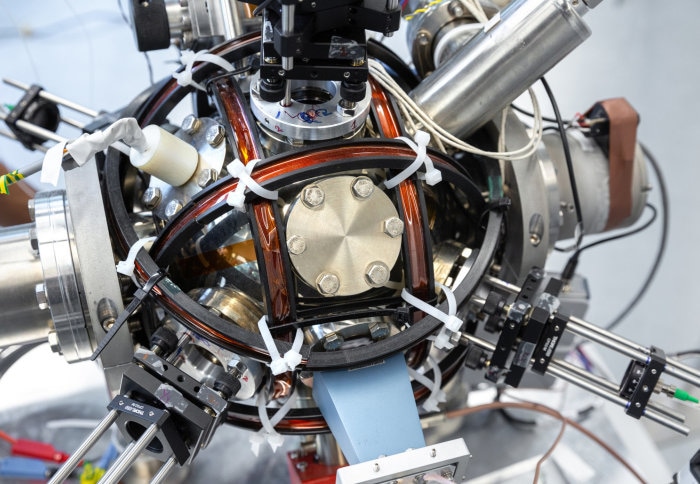Aug 20 2019
Researchers have performed an experiment for testing a famous theory related to dark energy and have not found any proof of new forces, placing strong restrictions on associated theories.
 The atom interferometer used for the experiment. (Image credit: Imperial College London)
The atom interferometer used for the experiment. (Image credit: Imperial College London)
Dark energy is the term given to a strange force that has been causing the universe to expand rapidly.
According to some physicists, apart from the four known forces—gravitational, electromagnetic, and the strong and weak nuclear forces—dark energy is the “fifth” force that acts on matter.
However, researchers consider that this fifth force could be “hidden” or “screened” for large objects such as planets or weights on Earth, rendering it challenging to detect.
Scientists from Imperial College London and the University of Nottingham have investigated the probability for this fifth force to act on single atoms and found no proof of this in their latest experiment.
This could lead to the rejection of famous theories related to dark energy that modify the theory of gravity, and leaves not many places to look for the evasive fifth force.
Finding the Fifth Force
The experiment was carried out at Imperial College London and verified by theorists from the University of Nottingham. It has been described in Physical Review Letters on August 19th, 2019.
This experiment, connecting atomic physics and cosmology, has allowed us to rule out a wide class of models that have been proposed to explain the nature of dark energy, and will enable us to constrain many more dark energy models.
Ed Copeland, Professor, Centre for Astronomy & Particle Physics, University of Nottingham
The experiment investigated theories of dark energy hypothesizing that the fifth force is relatively weaker when there is more matter around—the inverse of the behavior of gravity.
This would imply that it is powerful in a vacuum-like space but weak when lots of matter exist around. Hence, in experiments that use two large weights, the force would become too weak to measure.
Experiment with a Single Atom
Alternatively, the scientists investigated a larger weight with an extremely small weight (i.e., a single atom), where the force should have been detected if it existed.
The researchers tested for the existence of any extra forces that could be the fifth force acting on an atom by using an atom interferometer. A marble-sized metal sphere was positioned inside a vacuum chamber and atoms were permitted to free-fall within the chamber.
According to the theory, if there exists a fifth force that acts between the atom and the sphere, the path of the atom will deflect somewhat while passing through the sphere, leading to a change in the falling atom’s path. However, such a force was not detected.
It is very exciting to be able to discover something about the evolution of the universe using a table-top experiment in a London basement.
Ed Hinds, Professor, Department of Physics, Imperial College London